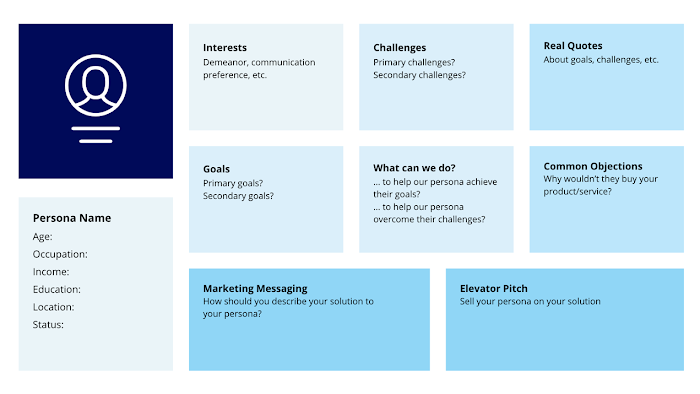As a business owner, ensuring your services reach consumers is crucial for profitability. Utilizing a social media-friendly platform like Shopify necessitates the development of a strategic marketing approach to optimize exposure and drive conversions. This article delves into the fundamental pillars of formulating a Shopify social media marketing strategy. Discover the imperative reasons your business should embrace social media marketing on the Shopify platform.
Contents
- 1 Why Shopify Social Media is Important
- 2 Shopify Social Media Marketing: 5 Essential Pillars
- 3 Wrap up
Why Shopify Social Media is Important
Social media complements your marketing strategy by increasing your return on investment. But if you are still skeptical about adopting an approach for social media marketing Shopify, here are the potential benefits.
Improves brand awareness
In 2023, there are 4.8 billion social media users worldwide, constituting 59.9% of the global population and encompassing 92.7% of all internet users. By employing a multi-channel social media marketing strategy, you can bring your business to as many potential consumers as possible.

The modern consumer is a socially aware being. They only shop with brands that align with their social values. Since social media platforms allow your business to express a clear-cut brand message, consumers can better understand your core values and decide if it aligns with theirs.
For instance, Nielsen claims that Facebook recommends services to users based on their friends’ activities and previous searches. LinkedIn Business also claims that 84% of buyers rely on referrals from friends and family.
Helps to track your competitors
While social media exposes your brand to the world, you also get the chance to evaluate your direct and indirect competitors. For example, YouTube analytics can give you insights into your competitor’s best practices in video marketing. You can also use social listening tactics to spot popular hashtags and trends to hop on.
Engages with customers directly
Think about it, your Shopify store has limited means of engagement – email and live chat. Alternatively, you can engage consumers directly on social media to get valuable feedback from them. You can even use approaches like creating explainer videos to make your brand relatable.
When it comes to customer engagement, social media platforms like Facebook and Instagram are extensions of your business. Facebook (Meta) claims that 61% of consumers in the United States expect instant responses to their messages on social media.
Social media marketing allows you to sell your products online. According to SmallBizGenius, over 50% of business revenue comes from social sales. Besides, 70% of marketers use social media tools to generate leads for their online stores. So, adjust your social media marketing campaign to take advantage of this potential consumer pool.
You can discover two methods for incorporating social media at How to Add Social Media to Shopify: 2 Easy Ways to Follow
Shopify Social Media Marketing: 5 Essential Pillars
Here are the five pillars of marketing goods on social media for your Shopify store.
Pillar 1: Everything starts with research
Your Shopify social media marketing strategy must always start with extensive research. Before developing and finalizing a marketing strategy on social media platforms, you need to study the market, competitors, and potential customers.
Evaluate the market
Understanding the market provides you with a better social media strategy to create a unique value proposition for your business. And since the market is saturated in eCommerce, you need to stand out from the pile. With a clearer picture of the market scenario and opportunities, you can adjust your business goals and eCommerce strategy for your Shopify store.
Analyze your competitors
While studying the market, you also need to check on the competitors thoroughly. The goal here is to identify:
- Who are they?
- What are their core strengths?
- What are their main weaknesses?
- How do they position their brand?
- Who is their target audience?
- What channels do they use?
Answering these questions helps you fine-tune your social media marketing strategy and enables your marketers to set more precise goals. You can also use social media listening to monitor competitors’ online activity, all within the legal limits of available public data.
Identify your target audience
With enough information about your competitors, the next step is to identify your target audience. Start by finding out where they hang out. For example, if your Shopify store sells in a niche market, you can find them in Reddit communities or Facebook groups. You also need to gather demographic data from which you can create buyer personas for your brand’s ideal customer. Some of the demographic data to collect include:
- Age
- Location
- Gender
- Career
- Income
- Marital status
Here’s an example of a buyer persona template for eCommerce:

Pillar 2: Social media marketing strategy is a must
Developing a social media marketing Shopify strategy involves a planned approach that factors in the data gathered from market research. Here are the core steps that constitute the ideal social media strategy.
Work on a plan
Your marketing plan should collate research data with your internal business expectations. You can also factor in competitor weaknesses and exploitable gaps. All in all, your Shopify social media marketing plan should consider the following:
- Content creation plan
- Preferred channels
- Marketing goals (short-term and long-term)
- Brand-relevant hashtags and keywords
Set goals and outline steps for their implementation
The next step is to specify the business goals because you can’t achieve everything at once, let’s face it. Narrowing down the focal point helps you allocate resources to the right initiatives. After establishing the goals, devise ways to implement and achieve them. For instance, if your business wants to increase exposure, you can use a solution to gain followers to boost your follower count.
Decide on channels
When your social media marketing Shopify plan starts taking shape, you need to decide on the marketing channels. But before finalizing your choice, answer these questions:
- Are my customers here?
- What is the platform’s potential reach?
- Which platforms do my competitors dominate?
The figures for the second quarter of 2023 indicate that Generation Z and Millennials in the United States were likely to follow and make purchases through influencers on social media. In fact, 55 percent of Millennials and 52 percent of Generation Z had followed an influencer and purchased something they had seen that influencer advertising.
Also, Facebook has 2.98 billion active users (April 2023), making it the social media with the widest coverage. So, if you are selling a product that caters to millennials and Gen Z, you can use Facebook as your primary channel and extend to TikTok and Twitter subsequently.
Besides, Shopify now has a partnership with TikTok that allows users to buy goods while using the platform. The same approach of identifying suitable channels works for other target audiences. You need to answer the 3 questions mentioned above, at least.
Pillar 3: Embrace quality content
Even if you have a massive Shopify social media marketing following, you still need to ‘feed’ your audience with top-notch content to keep them engaged with your brand. Follow these steps to generate high-value content:
Collect ideas
Since you may use social listening, you should have gathered enough hashtags and keywords. The next course of action is to gather these ideas into an idea bank from which you can craft a content plan. It’s important not to keep the ideas in notes or different documents. You need to create a unified backlog. An enormous number of tools can help you keep such ideas in one place. You can use something simple like a sheet or a doc from GSuite or go with project management and content collaboration tools like Trello.
Deliver quality
Now that you have concrete ideas, it’s time to return to your competitors to identify the best practices that make their businesses excel and experiment with your own approaches. This strategy provides you with the best avenue to deliver top-quality content.
Your content can take the following forms:
- Video
- News
- Images
- Written material (social media posts)
- Marketing material (promotions, contests, and giveaways)
- Feature content
- Behind the scenes
- Q/A
- Reels and Live streams
- Stories and status updates.
But what makes a content piece top-notch? It all comes down to the value customers get from the content. Whether the content piece is an image or a post, consumers need to gain valuable information from it.
Develop a brand identity
When choosing visuals for your brand on social media, you need to establish consistency on all platforms. Ensure that the brand colors reflect your ethos — and keep them consistent across networks. Above all, use high-quality custom images that showcase your brand’s persona, and avoid generic stock photos and videos.
Brand identity is definitely worth investing in. You’d probably need a freelance designer or a team to work on visuals. However, if you’re short on resources, you may consider using graphic design software. Such platforms don’t require special skills and have pretty intuitive UI/UX.
>>> Mastering Resize Image for Shopify: Step-by-Step Guides for 2024
Pillar 4: Keep an eye on the data
If you want your marketing strategy to succeed, you must embrace Shopify’s social media analytics. A Talend Survey showed that 36% of business executives still rely on intuition to make critical eCommerce decisions.

Don’t run your Shopify social media marketing without data. Instead, follow the examples of 64% of executives who rely on data-driven initiatives for every aspect of their business. Here are the steps to adopting a successful data-enabled social media strategy:
Automate processes
To gather data in real-time, you must automate business processes by adopting data management and analysis tools. Marketers can use these tools to generate leads, identify customer behavioral patterns, and automate routine tasks.
In general, you should try transforming your online business processes to be data-driven, especially when it comes to marketing. Collect all the essential insights about your business, and leverage data reporting. Using Shopify to BigQuery integration, you will automatically gather customer information, best-selling products, and more. These can be used for further analysis.
Track performance
All that data is meaningless if your marketers and analysts can’t interpret it. So, you need to outline the key performance indicators (KPIs) to track for every social media marketing campaign. Here are some essential KPIs to monitor:
- Conversion rate
- Repurchase Rate
- Customer retention rate
- Bounce rate
- Average engagement rate
- Audience growth rate
- Click-through rate
- Cost per click
- Cost per mille
- Net promoter score
Analyze data
Once you determine the metrics you want to track, the next course of action is to analyze them. For this purpose, you need analytical tools to arrange and interpret the data. Twitter, Facebook, and YouTube all have internal analytics dashboards, but you can gather everything together to gain more extensive insights using Sprout Social, Google Analytics, and HubSpot. You can also reach out to customers directly via feedback forms and questionnaires. This outreach method creates personal connections with your consumers.
Overall, analyze data from any possible channel and in every platform you use – be it sales funnel tools, CRMs, or internal social media reports.
Spot (changing) trends
Another reason top businesses use data-driven initiatives is to spot changes in the market, which is essential in predicting upcoming trends. The simplest way to trendspotting is to check:
- content people share on social media
- analyze which ads perform best
- what types of posts gather the most engagement
- what products are growing in your niche
Pillar 5: Execute in circles
Flexibility is key when working on a data-intensive social media marketing Shopify strategy. Don’t ever set any plan in stone because things change rapidly on social media. The strategies that work today might become defunct the next day. Despite the ever-changing social media landscape, here are steps to keep you in pace with the market.
Experiment
Instead of following one way of doing things, experiment with various strategies to see what brings more value to your customer and, in turn, your brand. Use A/B testing to find the social media posting models, types of content, or even titles that work for your business.
Adjust your strategy
From the gathered insights, re-evaluate your strategy and pivot to more lucrative social media advertising strategies. In essence, go where the data points. Adjustment here is crucial. To stay on top, you need to be responsive to trends and implement new approaches quickly or strengthen the existing steps. For this, execute your social media marketing steps in circles. Choose a suitable time for performance review and backlog prioritization – it can be once per month. Review progress, metrics, and relevant data. Adjust the next steps or keep everything as it is (it’s also an option).
Wrap up
Utilizing Shopify social media marketing will help your business much. To take the first steps in conquering the social media environment, you should follow the pillars described in this article complied by BSS Commerce Shopify. Do the market and competitors research, clearly understand who is your target audience, and identify marketing channels. Experiment, collect, and analyze data. Adjust your strategy and execute. This is a simple recipe that can bring you results in 2024!
>>> 7+ Marketing Ideas to Empower Women-Owned Businesses on International Women’s Day





